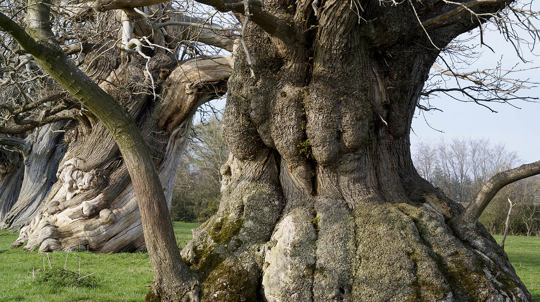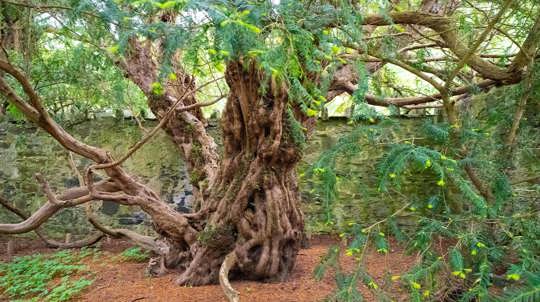Accurately ageing yew trees is notoriously difficult because fungi rot the inside of their trunks over time, erasing the tree rings. Most ages given are therefore very rough estimates.
Ancient yew trees: the UK's oldest yews

Digital content editor
With a lifespan of several thousand years, the yew tree is the oldest native tree species found in the UK and one of the oldest in Europe.
Ancient yews alive today have witnessed monumental moments in our history. The Ankerwycke Yew in Berkshire, for example, was an alleged meeting place for Henry VIII and Anne Boleyn during the 1530s. It was also a mere stone’s throw from the sealing of the Magna Carta – believed to have occurred just across the river at Runnymede. Meanwhile, in Scotland, a yew tree near Loch Lomond is said to have sheltered Robert the Bruce while he and his men were on the run.
But how old can a yew tree really get? Read on to discover the oldest yew trees in the UK, and what makes these titans of the plant world so special.
Can a yew tree be immortal?
While other trees might succumb to damage and disease long before they reach maturity, yew trees have an extraordinary ability to rejuvenate, bouncing back from injury with new growth. They do this by:
- regrowing vigorously even into old age
- displaying exceptional disease resistance despite fractures and splits in the wood
- sending down aerial roots within the main trunk as it hollows over time, sometimes forming new trunks.
These properties have led to a long association between yews and everlasting life. But can they really be immortal? Well, while theoretically a yew tree could go on living forever, ultimately – as with all living things – the stress and strain of environmental factors or pests will eventually take its toll.
What is the oldest yew tree in the UK?
Fortingall Yew
Estimated to be between 2,000 and 3,000 years old, the Fortingall Yew is considered to be the oldest yew tree in the UK. Some reports put its age at closer to 5,000 years old, though a precise figure is difficult to obtain.
Situated in a churchyard in the village of Fortingall in Perthshire, the trunk of this impressive tree is split into several parts and it no longer looks like one tree but many. When it was first described in 1769 it was measured at a girth of 16 metres (52 feet). So large was its spread that funeral processions would pass through the arch formed by the split trunk.
Today the Fortingall Yew is much smaller, having lost much of its original girth.
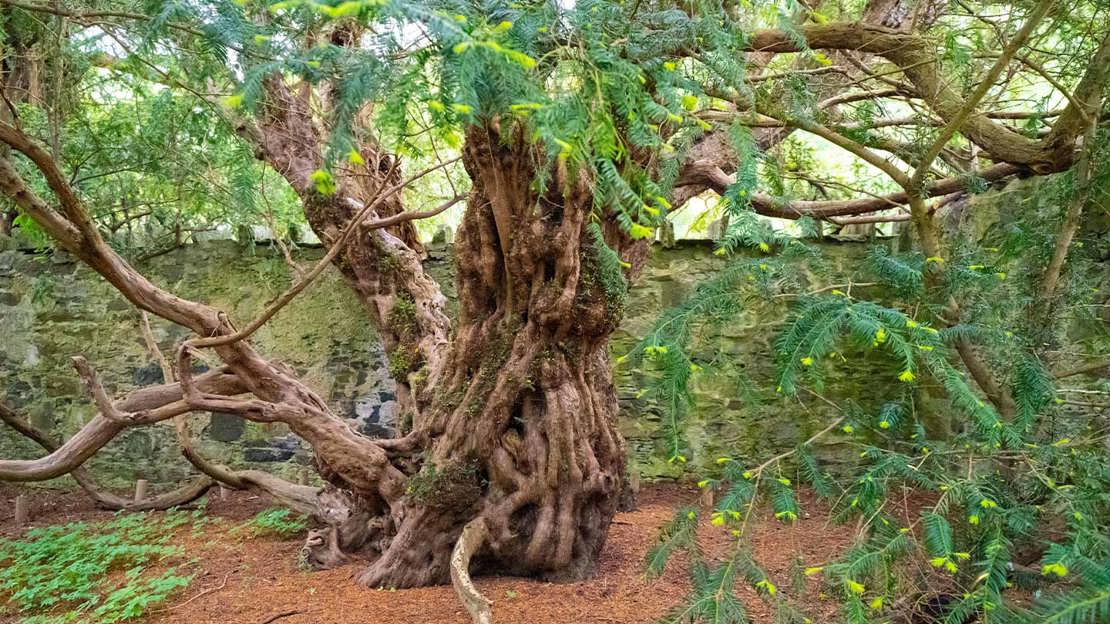
Other ancient yews
There are hundreds of ancient yews scattered across the UK, each one remarkable in its own right.
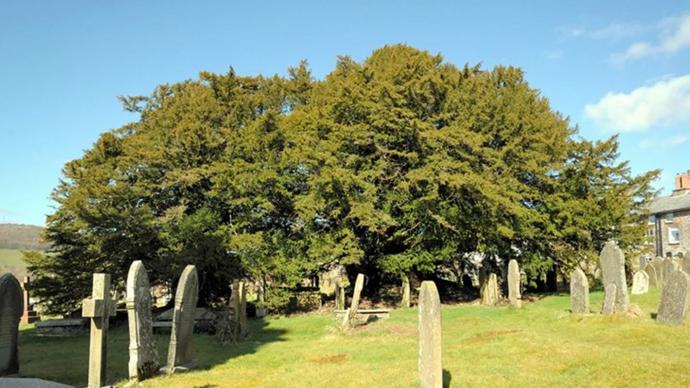
Credit: FloralImages / Alamy Stock Photo
Defynnog Yew
Another tree vying for the title of Britain’s oldest yew is in St Cynog’s churchyard in Defynnog – a small village in Wales. The Defynnog Yew could be of similar age to the Fortingall Yew, with some claims putting it at 5,000 years old. This is disputed by other estimates and it is more likely to be in the region of 2,000-3,000 years old.
The Defynnog Yew is the largest of four yew trees in the churchyard and grows from a mound that measures 8 metres (26 feet) across.
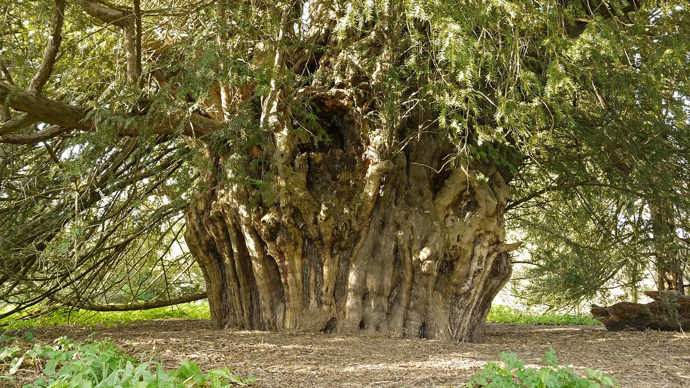
Credit: Julian Hight / WTML
Ankerwycke Yew
The Ankerwycke Yew near Wraysbury in Berkshire may not be as old as the yews in Fortingall or Defynnog but it has certainly seen some fascinating history in its time.
This tree is estimated to be at least 1,300 years old, possibly as old as 2,500. If correct, this means it was over 1,500 years old when the Magna Carta was sealed by King John in 1215, allegedly across the other side of the Thames. The Ankerwycke Yew has a girth of eight metres (26 feet) at 0.3 metres (one foot) off the ground.
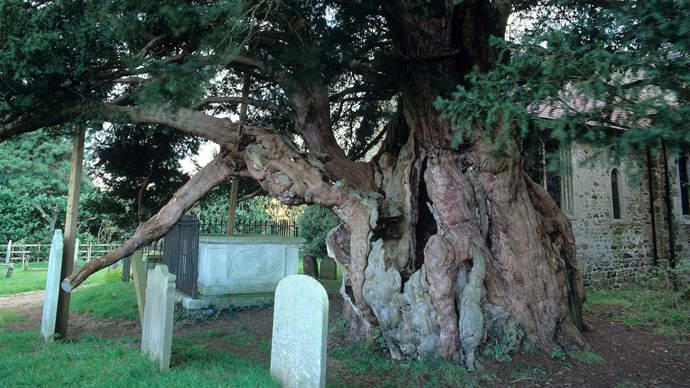
Credit: Archie Miles / WTML
Crowhurst Yew
Another of our ancient yews that stands in a churchyard, the Crowhurst Yew in Surrey is famous for the wooden door at its base – thought to have been fitted in the mid-nineteenth century. Around the same time, a cannonball believed to have originated from the English Civil War was found lodged inside the tree, a testament to the history these ancient trees can harbour.
The Crowhurst Yew is thought to be at least 1,250 years old, though some reports put its age closer to 4,000. It has a girth of over 10 metres (33 feet) measured at 1.5 metres (4.9 feet) above the ground.
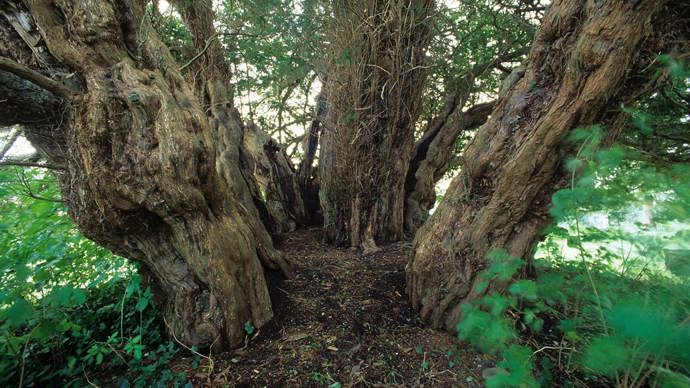
Credit: Archie Miles / WTML
Ashbrittle Yew
In the grounds of the parish church of Ashbrittle in Somerset, the Ashbrittle Yew is reported to be up to 3,000 years old. The evidence for this is largely circumstantial, based on the fact that it outdates the church and is thought to have been planted on a mound of significance from pre-Christian times.
At about 11.6 metres (38 feet) in girth, formed of multiple trunks, the Ashbrittle Yew is one of the largest ancients in the UK.
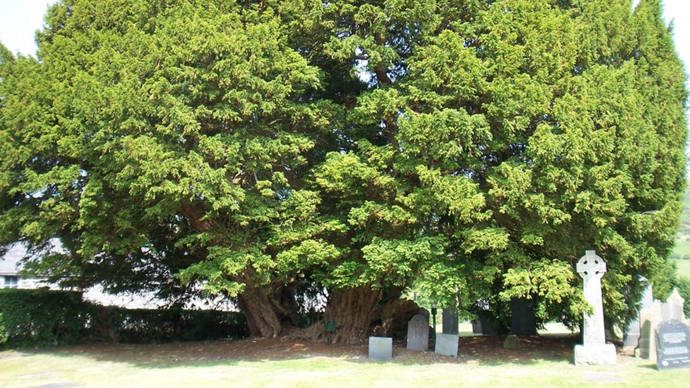
Credit: Karen Fisher / WTML
Llangernyw Yew
One of the oldest yew trees in Wales, the Llangernyw Yew is alleged by some to be between 4,000 and 5,000 years old, though other theories suggest it is far similar in age to the original church of St. Digain where it is located, said to have been founded about 1,500 years ago.
The Llangernyw Yew has a girth near its base of 10.9 metres (36 feet) and grows in four separate fragments with a wide space in the middle.
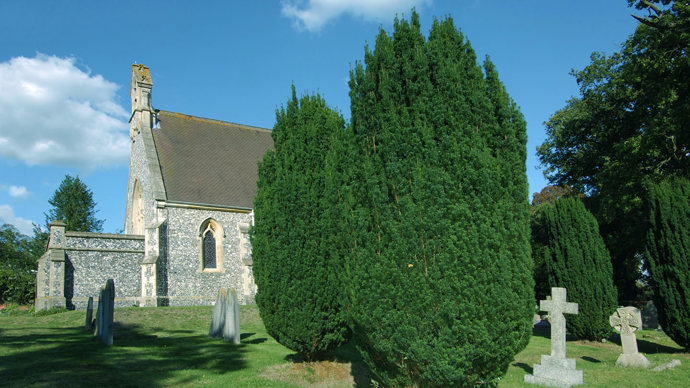
Credit: Nature Photographers Ltd / WTML
The original Irish yew
This tree isn’t as old as many of the common yews listed here, but it does have the title of the oldest Irish yew (Taxus baccata ‘Fastigiata’). Named after the estate in Northern Ireland where it resides, the Florence Court Yew dates back to the late 1700s when tenant George Willis found two unusual yew saplings that grew more upright than the common yew.
Willis gifted one to his landlord, the Earl of Enniskillen, who planted it on the family estate at Florence Court. Here it flourished and cuttings were propagated. This variety is now widely planted.
Why are yew trees planted in churchyards and graveyards?
A yew tree standing peaceful watch over a cemetery or churchyard is a common sight. In fact, the vast majority of the UK’s oldest yew trees can be found in churchyards, with over 500 churchyards in England containing yew trees older than the buildings themselves.
While there is no clear reason for the popularity of yews in church settings, it likely comes down to their mythology and symbolism. The Druids valued yew trees greatly, often planting them on sacred sites which were then adopted by early Christians as places to build churches on. Yew trees may have been planted deliberately in churchyards too, due to their association with immortality and the cycle of life and death.
As yew is poisonous, there may also have been practical reasons for planting them in churchyards in years gone by, as the trees could be kept away from grazing animals while still being used for making bows – a popular use for yew trees historically.
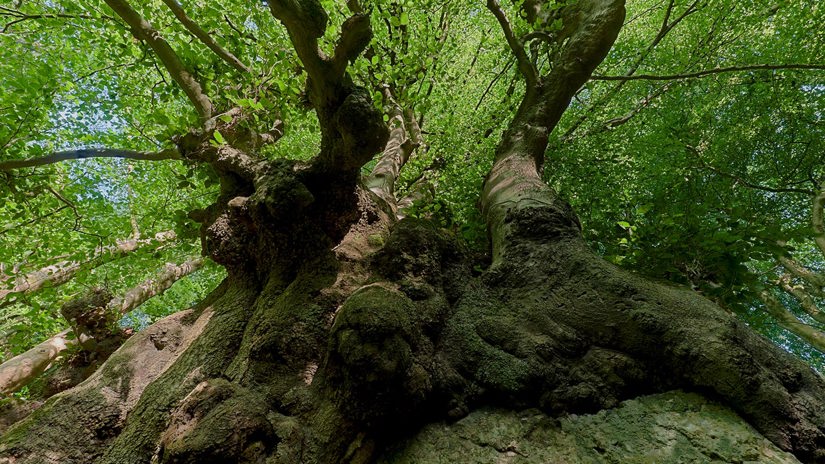
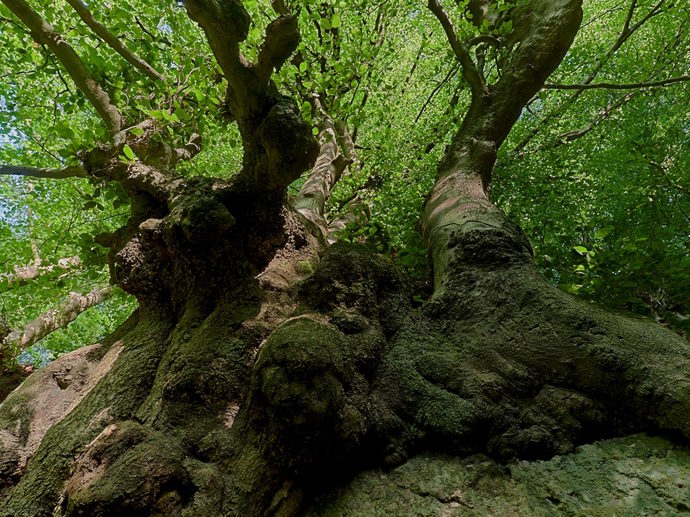
Ancient Tree Inventory
Ancient trees need special care and protection. There are thousands of ancient trees in the UK and we need your help to find out where they are.


